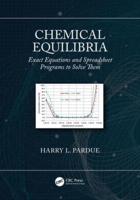Publisher's Synopsis
A fundamental cornerstone of physical chemistry is knowledge of the structure of the chemical system in question. For the study of solid materials, nuclear magnetic resonance (NMR) spectroscopy and diffraction techniques are two of the most widely used structural probes in the physical chemistry toolkit and continue to see advances in hardware and methodology. Alongside this, first-principles density-functional theory (DFT) calculations can provide a vital link between structural information from diffraction and NMR spectroscopy. The combination of these approaches, termed NMR crystallography, has become widely used to characterise structure, disorder and dynamics of solid materials in many areas of physical chemistry. In recent years, applications of NMR crystallography have increased significantly due to "black boxifying" of the computational tools, allowing this approach to be used by experts and non-specialists alike. This volume brings together physical chemistry researchers to discuss emerging computational and experimental methods in the field of NMR crystallography, as well as the current limitations and challenges that need to be overcome to broaden applications to increasingly complex materials. In this volume the topics covered include: Big Data and Simulations in NMR CrystallographyChallenges and Opportunities for NMR CalculationsGenerating Models that Describe Complex DisorderUnderstanding Dynamics and Mechanisms.










